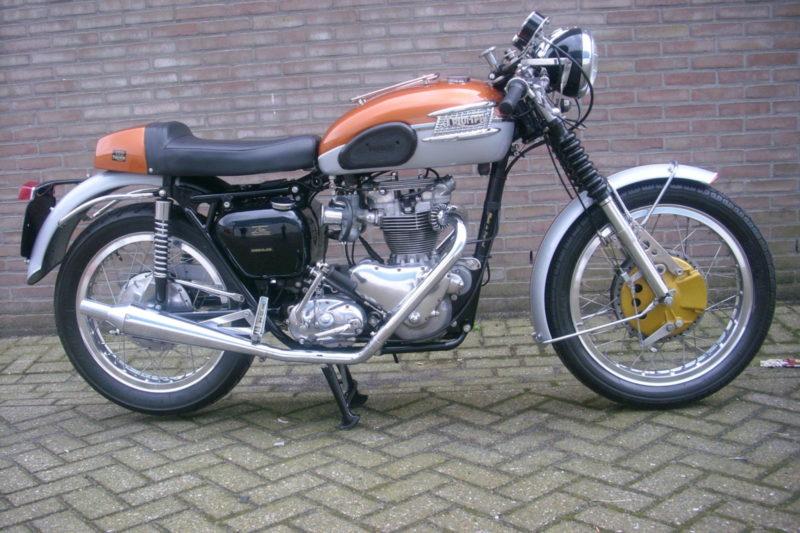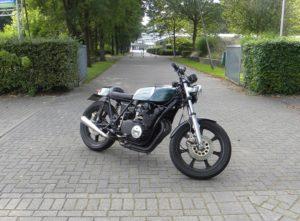The Café racer (or Café racer) concept dates back to the 50s, and owes its name to the Café races. A coin was tossed into the jukebox and the rider must have completed a fixed lap before the song was over. A cafe racer was and is a standard motorcycle that has been converted into a sporty looking, possibly tuned, motorcycle. One of the most iconic cafe racers is the Triton, a combination of the fast and reliable Triumph Bonnevile engine (Tri) and a great steering Norton Featherbed frame (Ton).
Café racers, a continuing trend
The trend to build caferacers or café racers is still not over. The basis of all that creativity lies mainly in the availability and prices of engines from the eighties (and early nineties) years. The availability of fairly recent 'classics'.
So there are people who say that every cafe racer means the end of a Real Classic and is therefore objectionable. That's a bit of shouting from behind the bushes. Because the current cafe racers are based on Real Classics that nobody wanted. They are also often built by enthusiasts who are far below the average age of the classic enthusiasts. By men with passion and limited budgets. And let's face it: Much of what has now evolved into a café racer would otherwise have ended up at the Hoogovens.
The influence on the value
Because only a short time ago there really wasn't a classic enthusiast who saw anything of any value in a not absolutely spotless Honda CX 500, a somewhat experienced XS650 or a BMW K75 or K100. Not to mention the Japanese four-cylinder between the 500 and 650 cc. Not to mention the Yamaha V twins and three-cylinder.
It is a matter of taste, but on the basis of what were recently unsaleable pastries, very neat café racers were made. And that made the market curious. The demand for previously unsaleable engines such as the CX500, XS650C models, small Suzuki and Kawasaki four-cylinder engines increased. Even a BMW K100 could just as easily raise more than 1000 euros. The trade is supply products stepped in tightly. And nowadays you no longer have to be a technical genius to put a neat 'ready-to-wear café racer' on the rubbers. A large part of the great makers for a cafe racer can be mounted with an IKEA + -like ease. And that there are also people who do nothing for two times and with two left hands make café racers? Well: every market has its sad bottom.
A win win situation
For the time being, the intermediate position is that a whole gang of 'old' but technically good motorcycles without any economic value of death has been saved. It doesn't matter much that they are no longer factory original. The prospective café racers were historically and technically uninteresting two-wheelers before their discovery. The fact that 'so many' of them have now been rebuilt should make the remaining 'standard' specimens more valuable in the long term. And with that the fans of Original Classical are again well served.










The same was actually also true for the 50s cafe racers. These were also discarded by the 'commuters' of the big cities and were also cheaply bought and rebuilt by the youth (Ton Upboys and later Rockers).
Only a few could afford a Dresda Triton or a Taylor Dow Goldstar.